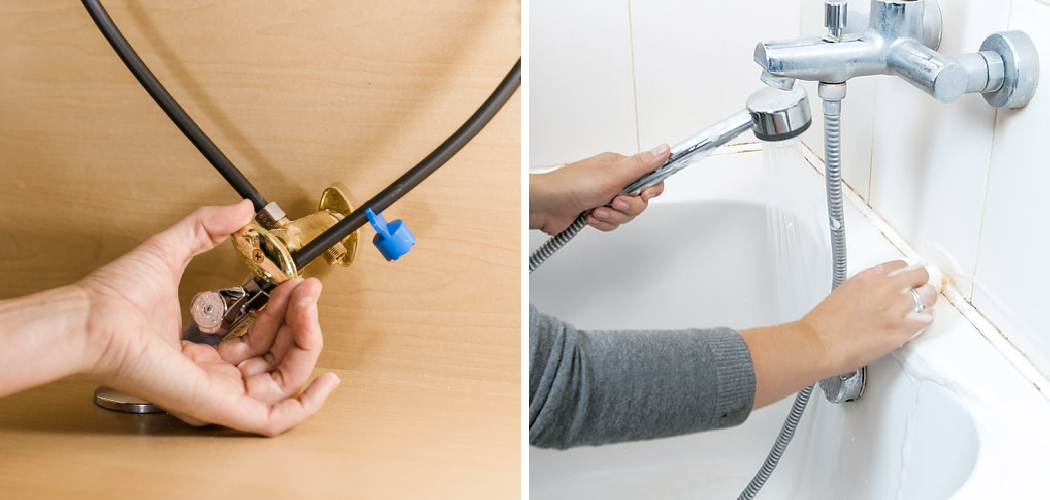Do you have a bathtub that just won’t stop running? Is it causing water damage or driving up your water bill? Thankfully, an easy solution is to turn off the water supply to your bathtub. In this blog post, we will provide you with a step-by-step guide on how to turn off bathtub water supply, so you can fix any issues or prevent further damage.
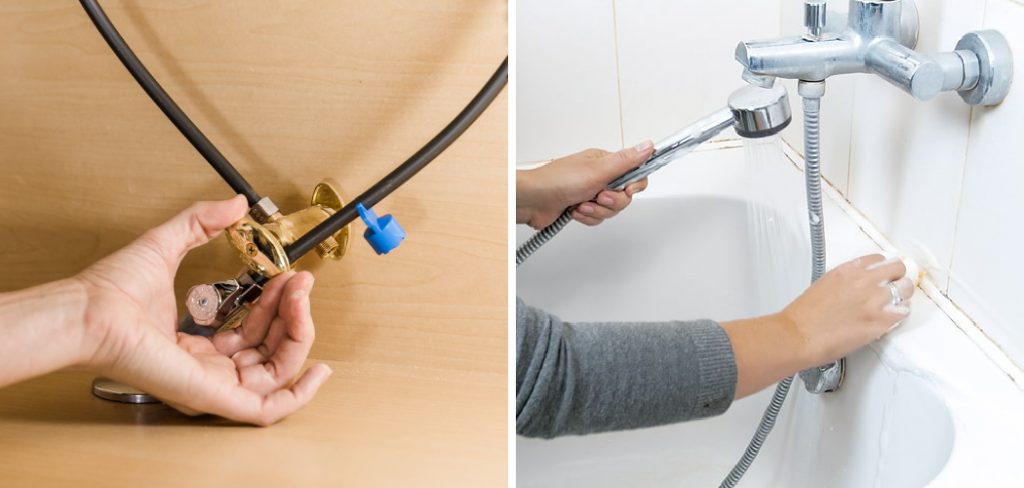
Can You Turn Off the Bathtub Water Supply?
Whether you’re cleaning your bathroom or just need to make a quick repair, knowing how to turn off your bathtub water supply is an essential home maintenance skill. Fortunately, the process is fairly simple and can be done with just a few steps. First, locate the shut-off valve, typically near the tub or in a nearby closet or basement.
Next, turn the valve clockwise until it is fully closed to stop the water flow. If you’re unsure of where the valve is located or need help turning it off, don’t hesitate to reach out to a professional plumber who can assist you with the process. By turning off your bathtub water supply when necessary, you can save yourself from a potential disaster and keep your bathroom functioning properly.
Why Should You Turn Off Bathtub Water Supply?
Do you know how much water you use when you take a bath? According to the United States Environmental Protection Agency, a full bathtub can hold up to 70 gallons of water. That’s a lot of H2O! To conserve this precious resource and save money on your utility bill, it’s a good idea to turn off your bathtub’s water supply when you’re done using it.
This simple action can also prevent potential water damage in your bathroom from an overflowing tub. So, the next time you enjoy a relaxing soak, turn off the water supply before you drain the tub. It’s a small step that can make a big impact.
How to Turn Off Bathtub Water Supply: A Step-by-Step Guide
Step 1: Locate the Shut-Off Valve
The first step in turning off the water supply to your bathtub is to locate the shut-off valve. This is typically located near the base of the tub and may be hidden behind a panel or access door. Once you have located the shut-off valve, you must turn it off clockwise until it stops.
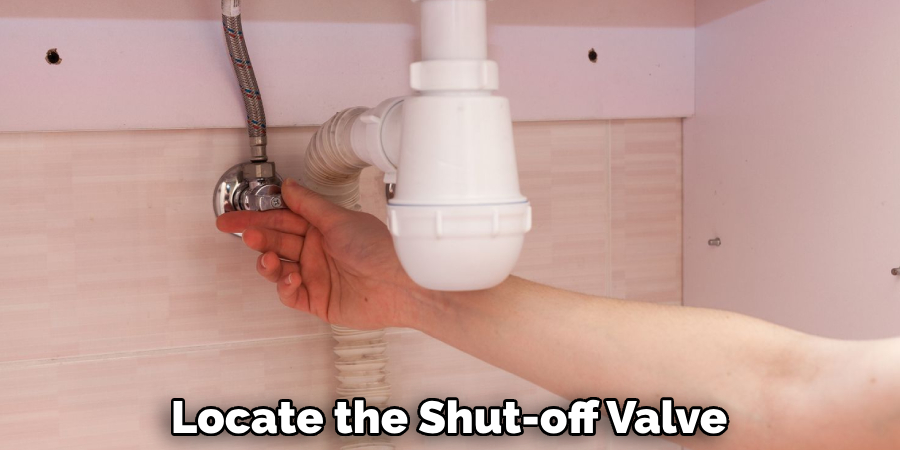
Step 2: Turn Off the Water at the Main Supply Valve
If you cannot find or access the shut-off valve near your bathtub, you will need to turn off the water at the main supply valve. The main supply valve is usually located outside your home, near where the water line enters your house. To turn off this valve, simply turn it clockwise until it stops.
Step 3: Drain the Remaining Water From the Tub
Once you have turned off either the shut-off or main supply valves, there may still be some water left in your tub that needs to be drained out before proceeding with any repairs or maintenance on your tub. To do this, simply open up any available drain plugs and allow all remaining water to drain out of your tub completely before continuing with any work on it.
Step 4: Close Any Open Faucets
Before leaving your bathroom, ensure all faucets are closed completely so that no additional water can enter your tub while repairs are being made or maintenance is performed on it. This will help prevent further damage from occurring due to water entering into any cracks or crevices in your tub while repairs or maintenance is performed on it.
Step 5: Verify That All Valves Are Turned Off
Once all open faucets have been closed and all remaining water has been drained from your tub, ensure that both valves (shut-off and main supply) are turned off completely by verifying that their handles are in their “OFF” positions before leaving the area for good measure.
This will help ensure that no additional water can enter your tub while repairs are being made or maintenance is performed.
Step 6: Contact a Professional Plumber if Needed
If you cannot locate either of these valves or if they appear stuck in place, contact a professional plumber as soon as possible for assistance with turning them off properly and safely without causing any further damage to either yourself or your plumbing system overall.
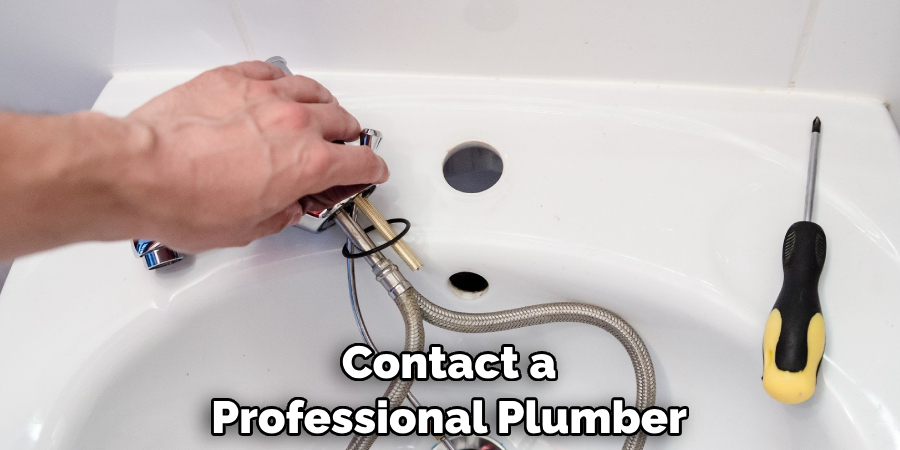
A professional plumber can also assist with any other plumbing issues that may arise during this process and advise how best to proceed with making necessary repairs and performing regular maintenance on your bathtub moving forward to keep it in proper working condition for many years to come!
Step 7: Turn On Water Supply Again When Finished
Once all necessary repairs and/or maintenance have been completed on your bathtub, remember to turn both valves back on again (clockwise) so that fresh running water can once again flow through both taps when needed!
That’s it! You’ve now learned how to turn off bathtub water supply in a few simple steps. With this knowledge, you can now confidently and safely make necessary repairs or perform regular maintenance on your bathtub whenever needed without worrying about any potential water damage occurring during the process.
And don’t forget to always contact a professional plumber if you ever encounter any issues requiring more expertise than you can provide yourself!
5 Considerations Things When You Need to Turn Off Bathtub Water Supply
1. Shut Off the Main Water Supply
The first step when you need to turn off the bathtub water supply is to shut off the main water supply. This can be done by turning off the valve near the water meter or the main water line. It is important to make sure that all other faucets and appliances are turned off before shutting off the main water supply, as this will prevent any additional damage from occurring.
2. Close All Valves
Once you have shut off the main water supply, it is important to close all valves connected to the bathtub. This includes any valves that may be located on either side of the tub, as well as any valves that are connected to a shower head or other fixtures in the bathroom. Ensure all valves are fully closed before proceeding with any further steps.
3. Turn Off Any Electrical Connections
If your bathtub has an electrical connection, it is important to turn it off before attempting to turn off its water supply. The best way to do this is by unplugging any cords from outlets or turning off circuit breakers at your home’s fuse box.
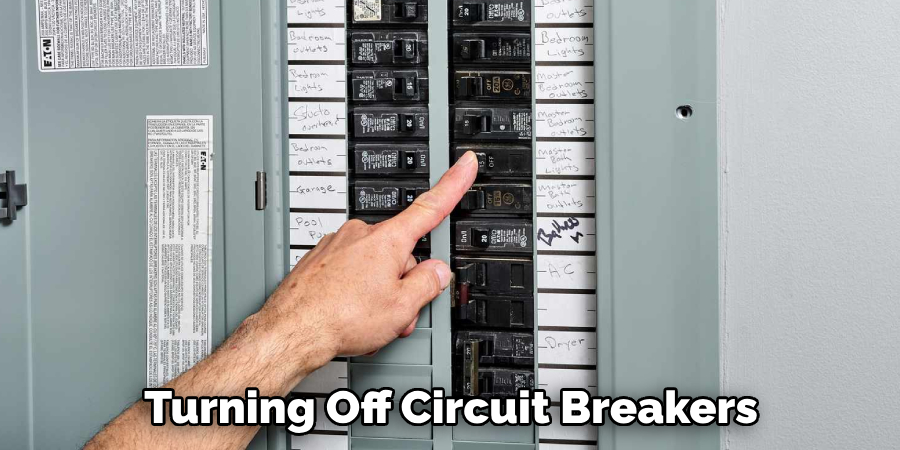
This will ensure that no electricity runs through your plumbing system while you are working on it, which can help prevent accidents and damage from occurring in your home.
4. Disconnect Pipes
Once you have shut off all of the necessary valves and disconnected any electrical connections, it is time to disconnect any pipes connected to your bathtub’s water supply. To do this safely and effectively, ensure you have a wrench or pliers handy to loosen and remove each pipe without damaging them or causing leaks in your plumbing system.
5. Check for Leaks
After completing all these steps, it is important to check for leaks in your plumbing system before turning on your main water supply again. Look around each pipe connection and underneath sinks for signs of wetness or dripping water, which could indicate a leak in your plumbing system.
If you notice anything suspicious, contact a professional plumber right away so they can make repairs before turning on your main water supply again.
5 Benefits of Turn Off Bathtub Water Supply
1. Save Money
One of the primary benefits of turning off your bathtub water supply is that it can help you save money. Shutting off the water supply prevents excess water from running and wasting away. This can help reduce your monthly utility bill significantly, as it will no longer include any water charges you didn’t use.
2. Reduce Water Waste
Another benefit of turning off your bathtub water supply is that it can help to reduce water waste. By doing so, you are helping to conserve a valuable resource and ensure enough clean drinking water is available for everyone worldwide. This is especially important in areas with a shortage of clean drinking water or where droughts are common.
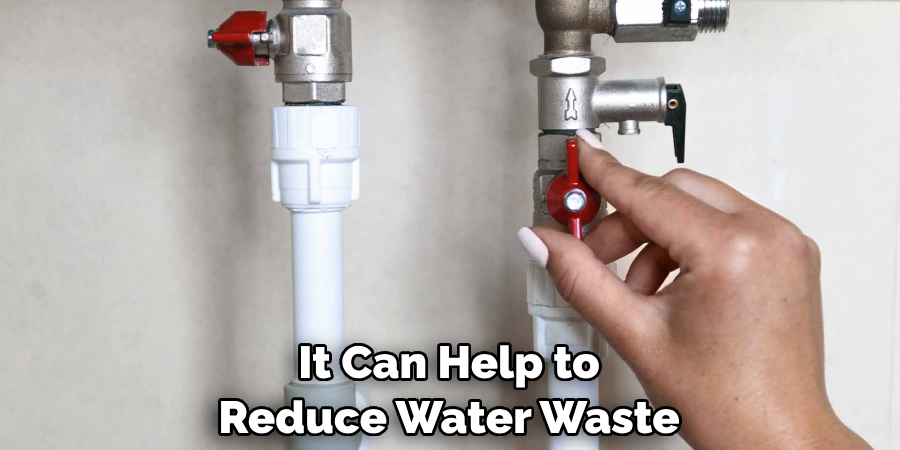
3. Prevent Leaks and Damage
Turning off your bathtub water supply can also help prevent leaks and other damage in your home. If there is a leak somewhere in the plumbing system, having the water turned off means that the leak won’t be able to get worse and cause further damage.
Additionally, if a pipe burst or something else goes wrong with the plumbing system, turning the water off can help minimize any potential damage caused by flooding or leaking pipes.
4. Improve Water Pressure
Turning off your bathtub water supply can also help to improve your overall water pressure throughout the house. When the valve is open, some of the pressure from other fixtures in your home may be diverted towards filling up the tub, which can lead to lower pressure elsewhere in the house when taking showers or using other fixtures such as sinks or toilets.
Shutting off this valve ensures that all of the pressure will be focused on providing adequate amounts of hot and cold running water when needed throughout your home instead of being wasted on an empty tub.
5. Increase Energy Efficiency
Finally, turning off your bathtub’s water supply can also help to increase energy efficiency in your home by reducing energy costs associated with heating up large amounts of unused hot tap water every day just for it to go down the drain unused afterward, anyway!
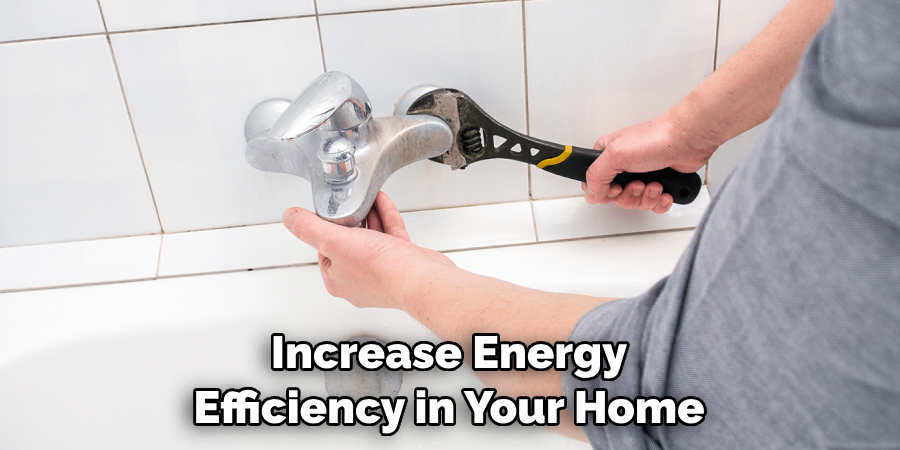
This is because when you turn off this valve, any hot tapwater left inside will cool down quickly without needing additional energy input from a heater since there won’t be any new hot tapwater entering to replace it once it has cooled down sufficiently enough.
Conclusion
In conclusion, turning off the water supply to your bathtub is easy with the right tools and some basic knowledge. Taking control of your plumbing system will save you money in the long run and prevent water damage and other plumbing mishaps.
Be sure to know where your shut-off valve is located and how to use it to prevent emergency plumbing situations. The above steps should help you easily turn off your bathtub water supply. Thanks for reading our post about how to turn off bathtub water supply.

